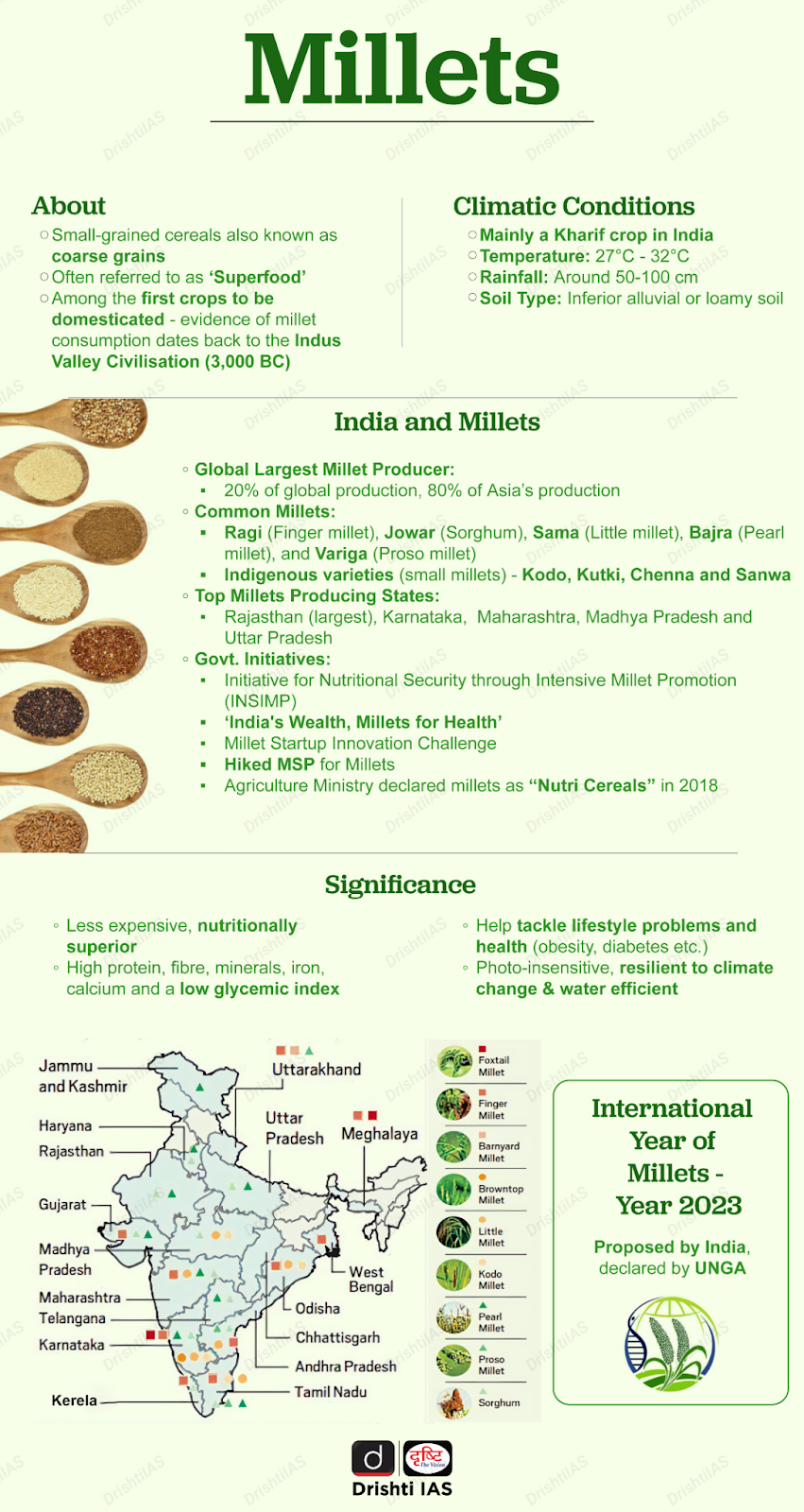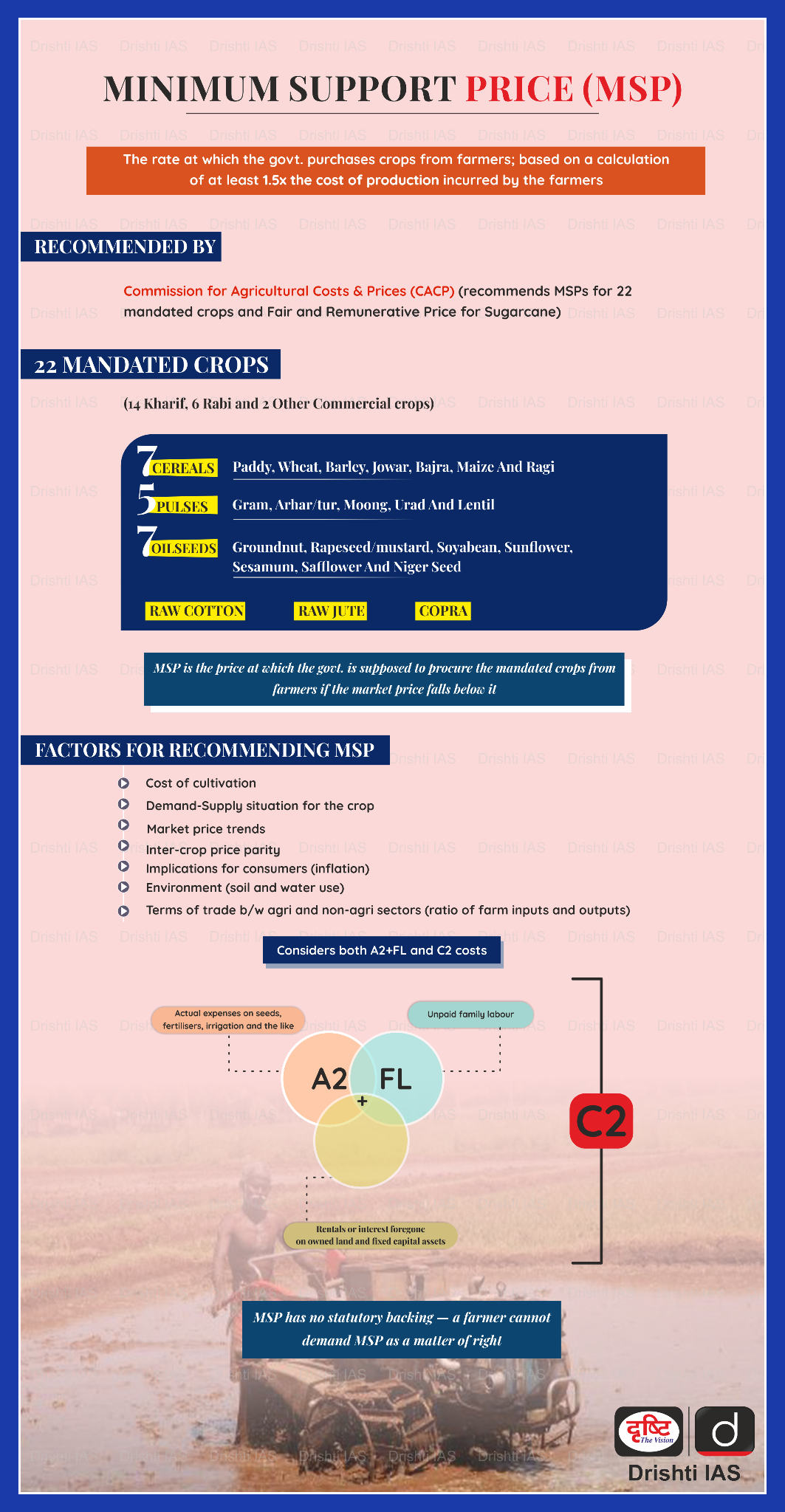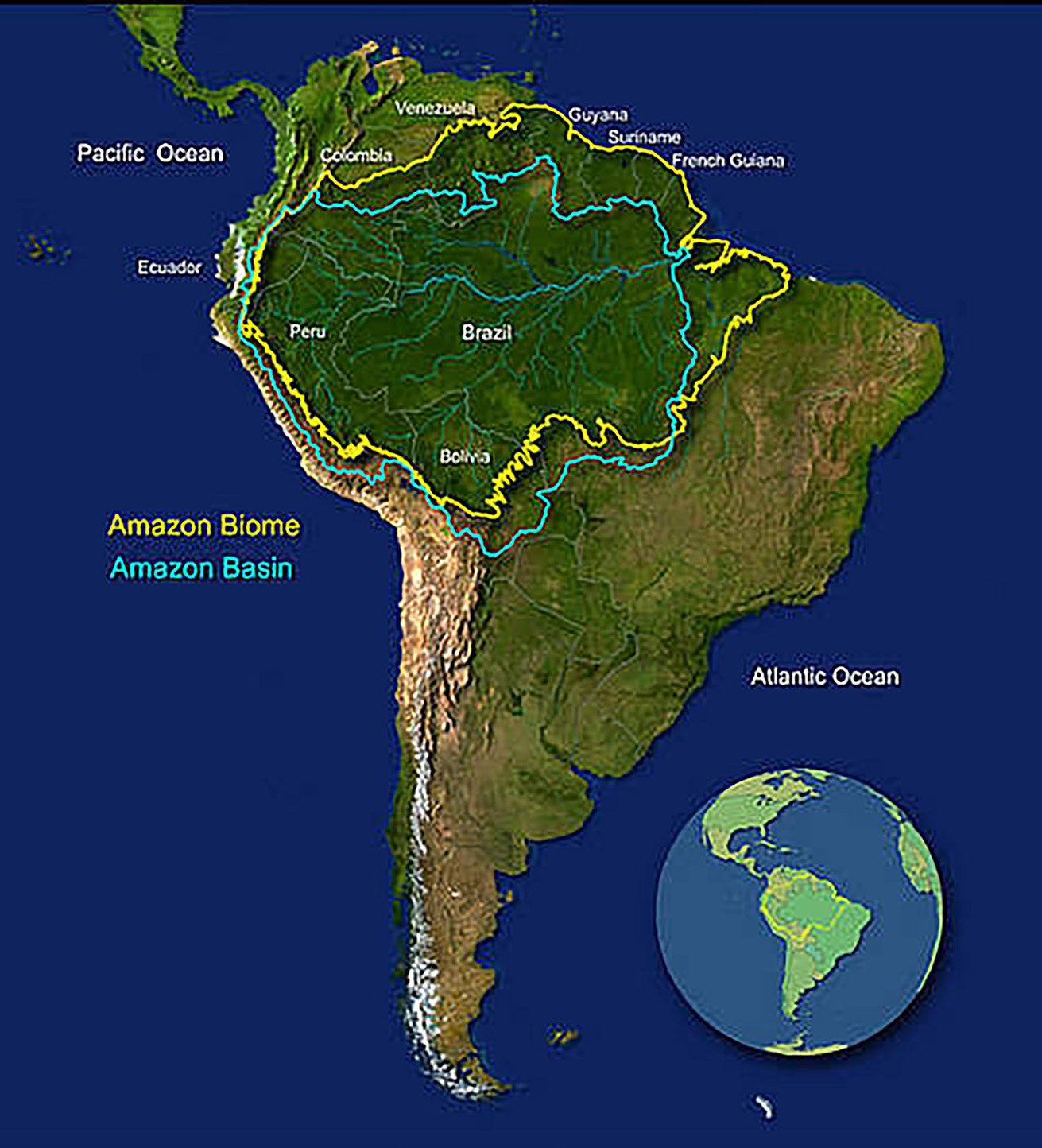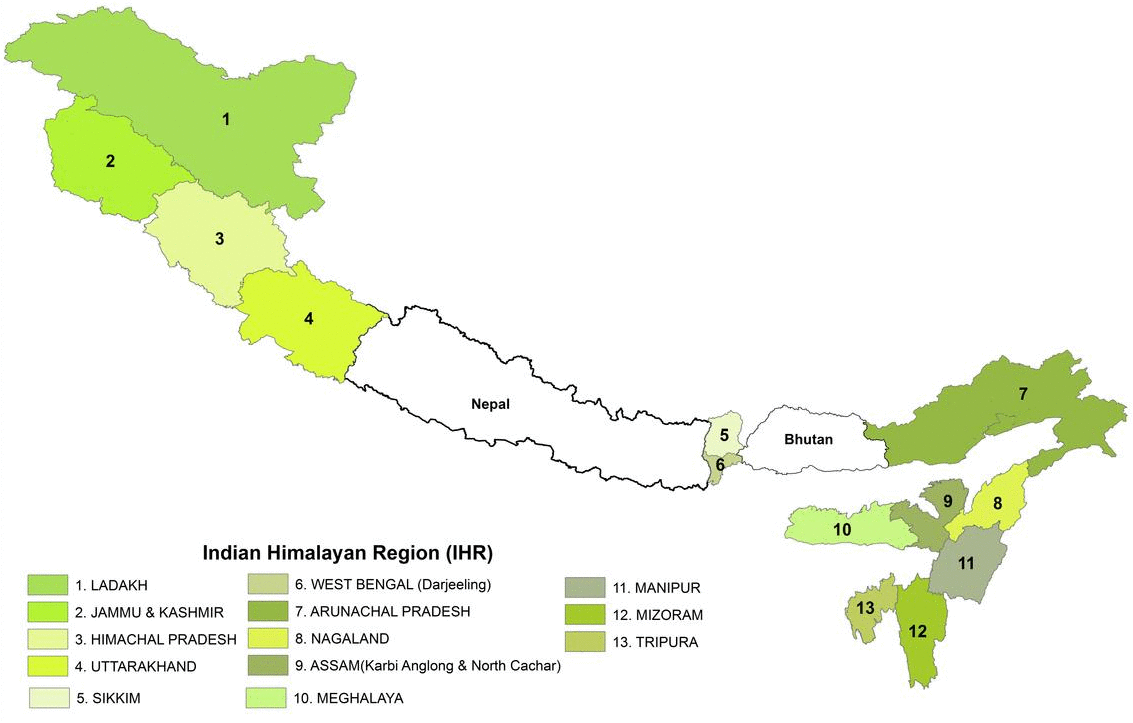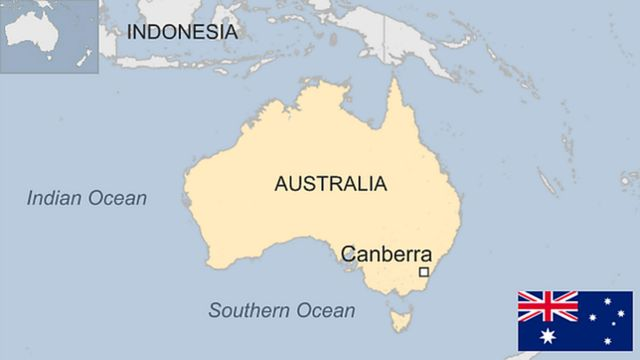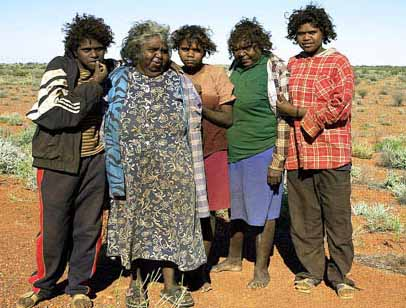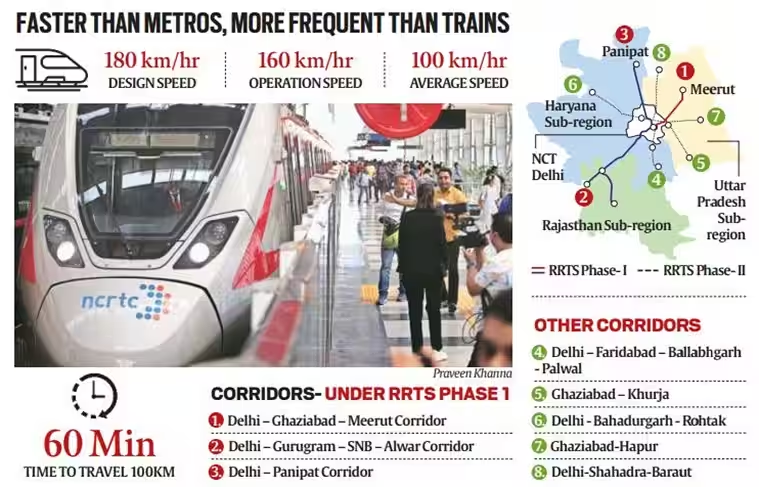Crop Switching for Sustainable Agriculture
For Prelims: Crop Switching, Drip Irrigation, Indo-Gangetic Region, Millets
For Mains: Types of Farming, Cropping Patterns Contribution to Economy, Employment & Output, Food Security
Why in News?
A recent study, featured in the journal Nature Water, was conducted by a team of researchers from the Indian Institute of Technology Bombay, the University of Delaware, Columbia University, and Yale School of the Environment.
- This study focuses on addressing water consumption and sustainable agriculture in India's northern plains, particularly the Indo-Gangetic region.
- The study focused on 124 districts in Uttar Pradesh, Bihar, and West Bengal, covering the upper, middle, and lower Ganga basin in India.
What are the Key Findings from the Study?
- Water Conservation through Crop Switching:
- Replacing rice with millets (pearl millet (bajra) and sorghum) during the Kharif season and shifting from wheat to sorghum in the Rabi season can reduce water consumption in the Indo-Gangetic Plains (IGP) by 32%. And boost farmers’ profits by 140%.
- Beyond Water Conservation:
- Crop switching can improve water savings by 55% in the Kharif season and 9% in the Rabi season.
- Farmers' profits can increase by 139% during the Kharif season and 152% during the Rabi season.
- Calorie production can increase by 39%.
- Crop Switching vs. Drip Irrigation:
- The authors compared the benefits of crop switching vis-a-vis improving irrigation efficiency — from flood to drip irrigation, and found that Crop switching outperforms drip irrigation in reducing groundwater depletion and energy savings.
- Drip irrigation improves net groundwater recharge by 34%, while crop switching achieves a 41% improvement.
- Drip irrigation alone does not enhance calorie production or farmer profits.
- A combination of crop switching and drip irrigation shows the greatest improvement in net recharge at the district level and reduces groundwater depletion by 78%.
- The Multi-Objective Approach:
- A multi-objective approach is essential for achieving a balance between water conservation, increased calorie production, and higher farmer incomes.
- Single-focused approaches come with trade-offs. For instance, prioritizing water conservation alone may boost savings by 4%, but it leads to significant reductions: Calorie production falls by 23%, and Profit drops by 126%, respectively, compared with the proposed solutions.
- Similarly, a profit-maximizing approach may slightly increase water savings but also reduce calorie production.
- Choosing a profit-maximizing strategy centred around sorghum, with its high minimum support price and low cultivation costs, can significantly boost profits by 58%. However, this gain is coupled with a stark trade-off: a notable 18.5% reduction in calorie production, a marginal 2% increase in water savings.
- Nutri Cereals for Improved Nutrition:
- Shifting to Nutri cereals, including sorghum and bajra, offers improved nutrition.
- Nutri cereals can lead to a 46% increase in protein production, a 353% increase in iron production, and an 82% increase in zinc production, benefiting consumers in terms of nutrition.
North Indian Plains
- About:
- They are a large flat landmass that lies south of the Himalayas and north of the Peninsular India.
- They are formed by the alluvial deposits of three major river systems: the Indus, the Ganga, and the Brahmaputra, along with their tributaries.
- They are the largest alluvial tract of the world.
- Geographical Overview:
- The Indo-Gangetic region has a subtropical climate with hot summers and cool winters.
- The northern plains can be divided into four physiographic regions based on the nature of the alluvium and the relief features.
- Bhabar:
- It is a narrow belt of coarse gravel and pebbles along the foothills of the Himalayas. It is about 8 to 16 km wide and has a porous surface that allows water to seep through it.
- Terai:
- It is a marshy and swampy region south of the Bhabar. It is about 20 to 30 km wide and has a rich soil and dense vegetation. It is also home to many wildlife sanctuaries and national parks
- Bhangar:
- It is the older and higher alluvial plain that lies above the flood level of the rivers. It is composed of clay, silt, and sand.
- The soil in this region contains calcareous deposits, locally known as kankar.
- It is the older and higher alluvial plain that lies above the flood level of the rivers. It is composed of clay, silt, and sand.
- Khadar:
- It is the newer and lower alluvial plain that lies along the river banks. It is composed of fine silt and clay. It has a light color and is very fertile. It is renewed every year by the floods.
- Bhabar:
- Agricultural Significance:
- The IGP plays a pivotal role in Indian agriculture, contributing 30% of the country's total food production.
- It serves as a primary source of food, including staple cereals like rice and wheat.
- The IGP plays a pivotal role in Indian agriculture, contributing 30% of the country's total food production.
- Demographic Significance:
- This region is one of the most densely populated areas globally, with an estimated 400 million inhabitants. The population density, especially along the banks of the Ganges, is exceptionally high.
UPSC Civil Services Examination Previous Year Question (PYQ)
Prelims
Q. With reference to ‘Initiative for Nutritional Security through Intensive Millets Promotion’, which of the following statements is/are correct? (2016)
- This initiative aims to demonstrate the improved production and post-harvest technologies, and to demonstrate value addition techniques, in an integrated manner, with a cluster approach.
- Poor, small, marginal and tribal farmers have a larger stake in this scheme.
- An important objective of the scheme is to encourage farmers of commercial crops to shift to millet cultivation by offering them free kits of critical inputs of nutrients and micro irrigation equipment.
Select the correct answer using the code given below:
(a) 1 only
(b) 2 and 3 only
(c) 1 and 2 only
(d) 1, 2 and 3
Ans: C
Anti-Defection Law
For Prelims: Anti-Defection Law, Supreme Court (SC), Tenth Schedule of the Constitution, Members of Parliament, 52nd Amendment Act, 1985, 91st Constitutional Amendment Act, 2003.
For Mains: Anti-Defection Law, Statutory, regulatory, and various quasi-judicial bodies, Separation of powers between various organs, Amendments.
Why in News?
Recently, the Supreme Court (SC) has rebuked the Speaker of the Maharashtra Assembly for prolonging Anti-Defection proceedings against the Chief Minister and other MLAs.
- The court expressed dissatisfaction with the lack of progress in the disqualification proceedings and urged the Speaker to make a decision within two months.
- Previously, the court had directed the speaker to prepare a timeline for completing the disqualification proceedings under the Tenth Schedule of the Constitution.
What is the Background?
- In 2022, the Uddhav Thackeray-led government was toppled and replaced by another government, comprising a faction of the Shiv Sena. The leader of the breakaway Sena faction, Eknath Shinde, became the new Chief Minister of Maharashtra.
- Thereafter, petitions were filed by the Thackeray group challenging the then-Maharashtra Governor’s decision to call for a trust vote before his resignation.
- Disqualification, if imposed, would affect not only the Shiv Sena MLAs but also Shinde's position as Chief Minister.
What is an Anti-Defection Law?
- About:
- The anti-defection law punishes individual Members of Parliament (MPs)/Members of the Legislative Assembly (MLAs) for leaving one party for another.
- Parliament added it to the Constitution as the Tenth Schedule in 1985 in order to bring stability to governments by discouraging legislators from changing parties.
- The Tenth Schedule - popularly known as the Anti-Defection Act - was included in the Constitution via the 52nd Amendment Act, 1985.
- It sets the provisions for the disqualification of elected members on the grounds of defection to another political party.
- It was a response to the toppling of multiple state governments by party-hopping MLAs after the general elections of 1967.
- Does not Penalise Group MP/MLAs:
- However, it allows a group of MP/MLAs to join (i.e., merge with) another political party without inviting the penalty for defection. And it does not penalise political parties for encouraging or accepting defecting legislators.
- As per the 1985 Act, a 'defection' by one-third of the elected members of a political party was considered a 'merger'.
- But the 91st Constitutional Amendment Act, 2003, changed this and now at least two-thirds of the members of a party must be in favour of a "merger" for it to have validity in the eyes of the law.
- The members disqualified under the law can stand for elections from any political party for a seat in the same House.
- The decision on questions as to disqualification on ground of defection are referred to the Chairman or the Speaker of such House, which is subject to ‘Judicial review’.
- However, the law does not provide a timeframe within which the presiding officer has to decide a defection case.
- However, it allows a group of MP/MLAs to join (i.e., merge with) another political party without inviting the penalty for defection. And it does not penalise political parties for encouraging or accepting defecting legislators.
- Grounds for Defection:
- Voluntary Give Up: If an elected member voluntarily gives up his membership of a political party.
- Violation of Instructions: If he votes or abstains from voting in such House contrary to any direction issued by his political party or anyone authorized to do so, without obtaining prior permission.
- Elected Member: If any independently elected member joins any political party.
- Nominated Member: If any nominated member joins any political party after the expiry of six months.
How Does Defection Affect the Political System?
- Subversion of Electoral Mandates:
- Defection is the subversion of electoral mandates by legislators who get elected on the ticket of one party but then find it convenient to shift to another, due to the lure of ministerial berths or financial gains.
- Affects the Normal Functioning of Government:
- The infamous “Aaya Ram, Gaya Ram” slogan was coined against the background of continuous defections by the legislators in the 1960s.
- The defection leads to instability in the government and affects the administration.
- Promote Horse Trading:
- Defection also promotes horse-trading of legislators which clearly goes against the mandate of a democratic setup.
What are the Challenges with Anti-Defection Law?
- Paragraph 4 of the law:
- Paragraph 4 of the Anti-Defection Law says that if a political party merges with another party, its members will not lose their seats.
- But this merger must have the support of at least two-thirds of the members of that party in the House. The law does not say if the merger is based on the national or regional level of the party.
- Paragraph 4 of the Anti-Defection Law says that if a political party merges with another party, its members will not lose their seats.
- Undermining Representative & Parliamentary Democracy:
- After enactment of the law, the MP or MLA has to follow the party’s direction blindly and has no freedom to vote in their judgment.
- Due to the Anti-Defection law, the chain of accountability has been broken by making legislators accountable primarily to the political party.
- Controversial Role of Speaker:
- There is no clarity in the law about the timeframe for the action of the House Chairperson or Speaker in the anti-defection cases.
- Some cases take six months and some even three years. There are cases that are disposed of after the term is over.
- No Recognition of Split:
- Due to the 91st Constitutional Amendment Act, 2003, the anti-defection law created an exception for anti-defection rulings.
- However, the amendment does not recognize a ‘split’ in a legislature party and instead recognizes a ‘merger’.
- Due to the 91st Constitutional Amendment Act, 2003, the anti-defection law created an exception for anti-defection rulings.
- Only Allows Wholesale Defection:
- It allows wholesale defection, but retail defection is not allowed. Amendments are required to plug the loopholes.
- He raised concern that if a politician is leaving a party, s/he may do so, but they should not be given a post in the new party.
- Affects the debate and discussion:
- The Anti-Defection Law has created a democracy of parties and numbers in India, rather than a democracy of debate and discussion.
- In this way, it does not make a differentiation between dissent and defection and weaken the Parliamentary deliberations on any law.
- The Anti-Defection Law has created a democracy of parties and numbers in India, rather than a democracy of debate and discussion.
Way Forward
- Several experts have suggested that the law should be valid only for those votes that determine the stability of the government. Example: passage of the annual budget or no-confidence motions.
- Various commissions including National Commission to review the working of the constitution (NCRWC) have recommended that rather than the Presiding Officer, the decision to disqualify a member should be made by the President (in case of MPs) or the Governor (in case of MLAs) on the advice of the Election Commission.
- Justice Verma in Hollohan's judgment said that the tenure of the Speaker is dependent on the continuous support of the majority in the House and therefore, he does not satisfy the requirement of such independent adjudicatory authority.
Legal Insights
UPSC Civil Services Examination, Previous Year Questions (PYQ)
Prelims:
Q. Which one of the following Schedules of the Constitution of India contains provisions regarding anti-defection? (2014)
(a) Second Schedule
(b) Fifth Schedule
(c) Eighth Schedule
(d) Tenth Schedule
Ans: (d)
Mains:
Q. The role of individual MPs (Members of Parliament) has diminished over the years and as a result healthy constructive debates on policy issues are not usually witnessed. How far can this be attributed to the anti-defection law which was legislated but with a different intention? (2013)
Q. ‘Once a Speaker, Always a Speaker’! Do you think this practice should be adopted to impart objectivity to the office of the Speaker of Lok Sabha? What could be its implications for the robust functioning of parliamentary business in India? (2020)
Minimum Support Price
For Prelims: Minimum Support Price, Rabi and Kharif Crops, Commission for Agricultural Costs and Prices (CACP), Fair and remunerative Price, Crop Diversification.
For Mains: Minimum Support Price, Major crops cropping patterns in various parts of the country, Indian Economy and issues relating to planning, mobilization of resources, growth, development and employment.
Why in News?
Recently, the Centre has announced hikes in the Minimum Support Price (MSP) for wheat and five other Rabi Crops for the 2024-25 marketing season.
- The most significant increase is for wheat, with a Rs 150 per quintal hike, the highest since 2007-08.
- Wheat is a crucial rabi crop and is the second-largest crop in terms of area coverage in India and plays a crucial role in the economy.
What is the Minimum Support Price?
- About:
- MSP is the guaranteed amount paid to farmers when the government buys their produce.
- MSP is based on the recommendations of the Commission for Agricultural Costs and Prices (CACP), which considers various factors such as cost of production, demand and supply, market price trends, inter-crop price parity, etc.
- CACP is an attached office of the Ministry of Agriculture and Farmers Welfare. It came into existence in January 1965.
- The Cabinet Committee on Economic Affairs (CCEA) chaired by the Prime Minister of India takes the final decision (approve) on the level of MSPs.
- The MSP is aimed at ensuring remunerative prices to growers for their produce and encouraging Crop Diversification.
- Crops Under MSP:
- The CACP recommends MSPs for 22 mandated crops and fair and remunerative price (FRP) for sugarcane.
- The mandated crops include 14 crops of the kharif season, 6 rabi crops and 2 other commercial crops.
- Three Kinds of Production Cost:
- The CACP projects three kinds of production cost for every crop, both at state and all-India average levels.
- ‘A2’: Covers all paid-out costs directly incurred by the farmer in cash and kind on seeds, fertilisers, pesticides, hired labour, leased-in land, fuel, irrigation, etc.
- ‘A2+FL’: Includes A2 plus an imputed value of unpaid family labour.
- ‘C2’: It is a more comprehensive cost that factors in rentals and interest for owned land and fixed capital assets, on top of A2+FL.
- CACP considers both A2+FL and C2 costs while recommending MSP.
- CACP reckons only A2+FL cost for return.
- However, C2 costs are used by CACP primarily as benchmark reference costs (opportunity costs) to see if the MSPs recommended by them at least cover these costs in some of the major producing States.
- The CACP projects three kinds of production cost for every crop, both at state and all-India average levels.
- Need for MSP:
- The twin droughts of 2014 and 2015 forced the farmers to suffer from declining commodity prices since 2014.
- The twin shocks of Demonetisation and the Rollout of GST, crippled the rural economy, primarily the non-farm sector, but also agriculture.
- The slowdown in the economy after 2016-17 followed by the pandemic further ensured that the situation remains precarious for the majority of the farmers.
- Higher input prices for diesel, electricity and fertilisers have only contributed to the misery.
- It ensures that farmers receive a fair price for their crops, which helps in reducing farm distress and poverty. This is particularly crucial in states where agriculture is a major source of livelihood.
What are the Concerns Related to MSP in India?
- Limited Extent:
- The MSP is officially announced for 23 crops, but in practice, only two, rice and wheat, are extensively procured and distributed under the National Food Security Act (NFSA).
- For the rest of the crops, the MSP implementation is ad-hoc and insignificant. This means that the majority of farmers growing non-target crops do not benefit from the MSP.
- Ineffective Implementation:
- The Shanta Kumar Committee, in its 2015 report, revealed that only 6% of the MSP was actually received by farmers.
- This suggests that a significant portion of farmers, around 94%, do not benefit from the MSP. The primary reason for this is inadequate procurement mechanisms and market access for farmers.
- Skewed Crop Dominance:
- The focus on MSP for rice and wheat has led to a skewed cropping pattern in favor of these two staples. This overemphasis on these crops can have ecological, economic, and nutritional implications.
- It may not align with market demands, thereby limiting income potential for farmers.
- Middlemen Dependency:
- The MSP-based procurement system often involves intermediaries such as middlemen, commission agents, and officials from Agricultural Produce Market Committees (APMCs).
- Smaller farmers, in particular, may find it challenging to access these channels, leading to inefficiencies and reduced benefits for them.
- Burden on Government:
- The government shoulders a significant financial burden in procuring and maintaining buffer stocks of MSP-supported crops. This diverts resources that could be allocated to other agricultural or rural development programs.
Way Forward
- To encourage crop diversification and reduce the dominance of rice and wheat, the government can gradually expand the list of crops eligible for MSP support. This will provide farmers with more choices and promote the cultivation of crops in line with market demand.
- Instead of providing MSP for all crops across all regions, the government can focus on setting MSPs for crops that are essential for food security and those with a demonstrated impact on farmer livelihoods. This targeted approach can help optimize resource allocation.
- Improve and modernize procurement mechanisms to ensure that farmers have access to MSPs. This may involve creating more efficient procurement systems, reducing middlemen, and expanding the reach of procurement agencies.
UPSC Civil Services Examination Previous Year Question (PYQ)
Q. Consider the following statements: (2020)
- In the case of all cereals, pulses, and oil seeds, the procurement at Minimum Support price (MSP) is unlimited in any State/UT of India.
- In the case of cereals and pulses, the MSP is fixed in any State/UT at a level to which the market price will never rise.
Which of the statements given above is/are correct?
(a) 1 only
(b) 2 only
(c) Both 1 and 2
(d) Neither 1 nor 2
Ans: (d)
Q. Consider the following statements: (2023)
- The Government of India provides Minimum Support Price for niger (Guizotia abyssinica) seeds.
- Niger is cultivated as a Kharif crop.
- Some tribal people in India use niger seed oil for cooking.
How many of the above statements are correct?
(a) Only one
(b) Only two
(c) All three
(d) None
Ans: (c)
Drought in the Amazon Rainforest
For Prelims: Amazon Rainforest, El Niño, Greenhouse gases, Amazon river dolphins
For Mains: Environment Pollution and Degradation, Conservation
Why in News?
The Amazon Rainforest, often referred to as the " “lungs of the earth," is currently facing an unprecedented and severe drought.
- This environmental crisis is causing significant disruptions to the lives of Indigenous people, impacting the entire ecosystem.
What are the Contributing Factors to Drought in the Amazon Rainforest?
- El Niño Phenomenon:
- The El Niño phenomenon is identified as one of the key drivers of drought in the Amazon.
- It results in abnormal warming of the surface waters of the Pacific Ocean, which subsequently affects rainfall patterns.
- In the Amazon region, El Niño leads to decreased humidity and reduced rainfall, exacerbating drought conditions.
- The El Niño phenomenon is identified as one of the key drivers of drought in the Amazon.
- High Water Temperatures in the Northern Tropical Atlantic Ocean:
- Another weather phenomenon is the unusually high water temperatures in the northern tropical Atlantic Ocean. Due to warmer ocean waters, heated air rises into the atmosphere, which then reaches the Amazon rainforest. The warm air inhibits the formation of clouds, causing rainfall to drop sharply.
- Anthropogenic Climate Change:
- Human-induced climate change is making the situation worse.
- Deforestation, primarily caused by activities like agriculture and logging, hampers the Amazon's ability to regulate climate and retain moisture.
- The destruction of vast areas of vegetation also contributes to rising temperatures, creating a cycle of increasingly severe droughts.
- This lack of vegetation leads to reduced evapotranspiration and, consequently, an increased susceptibility to drought.
- Human-induced climate change is making the situation worse.
- Mining Activity:
- Unregulated mining activity in the region contributes to the problem by creating land banks that impede river navigation.
- The alteration of aquatic and terrestrial ecosystems through mining also releases pollutants and greenhouse gases into the environment, further affecting the climate.
- Hydroelectric Dams:
- The construction and operation of hydroelectric dams in the Amazon, particularly on the Madeira River a major tributary of the Amazon contribute to drought scenarios.
- The creation of reservoirs for power generation alters natural river flows and affects aquatic and terrestrial ecosystems.
- The decomposition of organic matter in these reservoirs releases methane, a potent greenhouse gas, into the atmosphere.
- The construction and operation of hydroelectric dams in the Amazon, particularly on the Madeira River a major tributary of the Amazon contribute to drought scenarios.
- Transportation Infrastructure:
- The construction of infrastructure, like highways, can have detrimental effects on the rainforest by cutting through conserved areas, increasing deforestation,
- and intensifying climate anomalies in the biome.
- Impacts on the Water Cycle:
- All of these factors collectively disrupt the natural water cycle in the Amazon region.
- These lead to a decrease in water volume in rivers, prolonged droughts, and negative consequences for aquatic fauna, riparian habitats, and local communities dependent on these water resources.
- All of these factors collectively disrupt the natural water cycle in the Amazon region.
What are the Impacts of the Drought Caused in Amazon Rainforest?
- The drought has caused water levels to drop drastically in many rivers, including the Rio Negro a tributary of the Amazon, one of the world’s largest rivers by discharge levels, which has fallen to a record low level.
- This has left tens of thousands of people stranded in remote jungle villages, with limited access to food, drinking water, medicine, and other supplies.
- Some communities have reported outbreaks of diseases such as diarrhoea and skin infections due to the contaminated water.
- The drought has also affected the biodiversity and wildlife of the rainforest. Hundreds of fish and Amazon river dolphins also known as boto or pink river dolphin, have been found dead, their rotting carcasses polluting the water. Many animals are also suffering from hunger and thirst, as their habitats and food sources are shrinking.
- The drought has also increased the risk of forest fires, which have reached a record high in some areas.
- The fires have destroyed large swathes of vegetation, released huge amounts of carbon dioxide into the atmosphere, and created a thick haze of smoke that has worsened the air quality and visibility in many cities.
Amazon Rainforest
- These are large tropical rainforests occupying the drainage basin of the Amazon River and its tributaries in northern South America and covering an area of 6,000,000 square km.
- The Amazon Basin supports the world’s largest rainforest, which accounts for more than half the total volume of rainforests in the world.
- Comprising about 40% of Brazil’s total area, Peru, and also parts of Guyana, Colombia, Ecuador, Bolivia, Suriname, French Guiana, and Venezuela, the Amazon River Basin is the world’s largest drainage system.
- It is bounded by the Guiana Highlands to the north, the Andes Mountains to the west, the Brazilian Central Plateau to the south, and the Atlantic Ocean to the east.
- Tropical forests are closed-canopy forests growing within 28 degrees north or south of the equator.
- They are very wet places, receiving more than 200 cm of rainfall per year, either seasonally or throughout the year.
- Temperatures are uniformly high - between 20°C and 35°C.
UPSC Civil Services Examination, Previous Year Question (PYQ)
Prelims
Q. Which one of the following pairs is correctly matched? (2013)
| Geographical Feature | Region | |
| (a) | Abyssinian Plateau | Arabia |
| (b) | Atlas Mountains | North-Western Africa |
| (c) | Guiana Highlands | South-Western Africa |
| (d) | Okavango Basin | Patagonia |
Ans: (b)
Exp:
- Abyssinian Plateau is a plateau in Ethiopia (Africa) located at an elevation of 1388 metres above sea level.
- Atlas Mountains are a series of mountain ranges in northwestern Africa, running generally southwest to northeast. It forms the geologic backbone of the countries of the Maghreb (the western region of the Arab world) – Morocco, Algeria, and Tunisia.
- Guiana Highlands is the region in northern South America where Brazil, Guyana, and Venezuela meet at Mount Roraima. It is bounded by the Orinoco and Amazon river basins, and by the coastal lowlands of the Guianas.
- The Okavango river basin is the fourth-longest river system in southern Africa. It is an endorheic basin (watershed which does not drain to the sea) found in southwestern Africa.
- Therefore, option (b) is the correct answer.
Fragility of Indian Himalayan Region
For Prelims: Indian Himalayan Region (IHR), United Nations Environment Programme (UNEP), Teesta River, Environmental Clearance (EC), EIA 2006 Notification, Draft EIA 2020 Notification.
For Mains: The dangers mismanagement of the Indian Himalayan Region (IHR) poses to India’s environment and ecology.
Why in News?
The Teesta dam breach in Sikkim led to floods and also the recent landslides in Himachal Pradesh are stark reminders of the toll our development model is taking on the environment and ecology, especially in the mountainous Indian Himalayan Region.
The Indian Himalayan Region (IHR):
- It refers to the mountainous area in India that encompasses the entire Himalayan range within the country. It stretches from the northwestern part of India in Jammu and Kashmir to the northeastern states along the border with countries like Bhutan, Nepal, and Tibet (China).
- It covers 11 states (Himachal Pradesh, Uttarakhand, Sikkim, all northeast states, and West Bengal) and 2 UTs (Jammu & Kashmir and Ladakh).
What are the Issues in the Indian Himalayan Region (IHR)?
- Flaws in Graded Approach:
- Specified flaws in the graded approach of the Indian regulatory system, such as Ministries and Departments emphasise that the IHR is not given special consideration, despite its ecological significance.
- The Himalayas are prone to extreme weather conditions, seismic activity, and the effects of climate change, yet there are no differentiated environmental standards for projects in this region.
- Issues in Implementation of Different EIA Stages:
- There is a profound lack in addressing the IHR's needs at all stages of the Environment Impact Assessment (EIA) process, from screening to appraisal, by aligning project requirements with the region's ecological needs.
- The inclusion of clauses in the EIA notification to account for specific characteristics of projects in mountainous areas so as to elevate their liability is also lacking.
- Lack of National Level Regulator:
- One significant issue in the EIA process is the absence of a national-level regulator, which was suggested by the Supreme Court in 2011 in Lafarge Umiam Mining (P) Ltd. and T.N. Godavarman Thirumulpad vs Union of India,1995
- Currently, EIA processes tend to favor project proponents, and there is a lack of comprehensive consideration of cumulative impacts, especially in mountainous areas like the IHR.
- Issue of Uniformity in EIA 2006 Notification:
- The EIA 2006 notification categorizes projects based on sectors like mining, power generation, and infrastructure, but the threshold limits for requiring an EIA remain the same across the country.
- This uniform approach fails to consider the unique needs and vulnerabilities of the Indian Himalayan Region (IHR), despite its ecological importance and fragility.
- Issues in Draft EIA 2020 Notification:
- The EIA process has evolved with several amendments over the years, with a draft EIA in 2020 raising concerns about being perceived as pro-industry and neglecting ecological considerations. The EIA, when used diligently, can be a potent tool for environmental governance and sustainable development.
What are the Steps Required to Safeguard the Ecological Fragility of IHR?
- Differentiated Environmental Standards:
- Differentiated environmental standards should be established, taking into account the region's fragility and vulnerability.
- These standards should be incorporated into the Environment Impact Assessment (EIA) process, ensuring that projects in the IHR are subject to more stringent regulations and scrutiny.
- Differentiated environmental standards should be established, taking into account the region's fragility and vulnerability.
- Strategic Environmental Assessment (SEA):
- Policymakers should consider implementing SEA, which assesses the cumulative impact of development in an area.
- Integrating SEA into the clearance process can provide a comprehensive view of the potential consequences of development activities.
- Local Community Involvement:
- These communities often have a deep understanding of the region's ecology and can provide valuable insights into the potential impacts of development.
- Ensuring their participation can lead to more ecologically sound and socially responsible projects.
- Ecosystem-Based Approaches:
- Implement ecosystem-based approaches to development. Recognize that the IHR is not just a source of resources but also plays a critical role in maintaining regional and national ecological balance.
- Policies should prioritize the protection and restoration of ecosystems, including forests, rivers, and biodiversity.
- Rethinking Infrastructure Development:
- Infrastructure projects in the IHR should be planned carefully. Projects like dams, roads, and hydropower plants should undergo rigorous assessments to minimize their impact on the environment.
- Consider alternative technologies and routes that are less disruptive.
- Cross-Border Cooperation:
- The Himalayan region extends across several countries, and ecological challenges are not confined by political boundaries. India should engage in regional cooperation to address shared environmental issues.
- Collaborative efforts can help in mitigating transboundary challenges such as air and water pollution.
- Public Awareness and Education:
- Raise public awareness about the ecological significance of the IHR.
- Education and advocacy can lead to more responsible behavior and choices among individuals, corporations, and policymakers.
- Nature-Based Tourism:
- Develop sustainable and responsible tourism practices that generate income for local communities while minimizing negative impacts on the environment.
- This could involve promoting eco-tourism, enforcing carrying capacity limits, and raising awareness among tourists.
What is Draft Environment Impact Assessment (EIA) Notification 2020?
- About:
- The Draft EIA Notification 2020, when it was introduced, aimed to replace the previous EIA Notification of 2006.
- Post-facto Clearance:
- The draft notification introduced the concept of post-facto clearance, which would allow certain projects to seek environmental clearance even after they had begun operations without clearance.
- Reduced Public Participation:
- Critics argued that the draft notification weakened the public consultation process, making it more challenging for concerned citizens and communities to voice their opinions and objections regarding proposed projects.
- Exemptions for Certain Projects:
- The draft notification proposed exemptions for certain categories of projects, allowing them to bypass the EIA process.
- Extension of Project Validity:
- It suggested extending the validity period of environmental clearances for various projects, potentially reducing the need for frequent re-evaluations of environmental impacts.
- Dilution of Compliance Reports:
- There were concerns about the dilution of compliance reports, which are meant to ensure that projects adhere to environmental conditions and standards.
- The draft notification generated dubious standards, with environmental activists, experts, and concerned citizens voicing their objections.
EIA in India
- About:
- The Indian experience with Environmental Impact Assessment began over 20 years back. It started in 1976-77 when the Planning Commission asked the Department of Science and Technology to examine the river-valley projects from an environmental angle.
- EIA 1994 Notification:
- In 1994, the then Union Ministry of Environment and Forests, under the Environmental (Protection) Act 1986, promulgated an EIA notification making Environmental Clearance (EC) mandatory for expansion or modernisation of any activity or for setting up new projects listed in Schedule 1 of the notification.
- EIA 2006 Notification:
- The Ministry of Environment, Forests and Climate Change (MoEFCC) notified new EIA legislation in September 2006.
- The notification makes it mandatory for various projects such as mining, thermal power plants, river valley, infrastructure (road, highway, ports, harbors and airports) and industries including very small electroplating or foundry units to get environment clearance.
- However, unlike the EIA Notification of 1994, the new legislation has put the onus of clearing projects on the state government depending on the size/capacity of the project.
UPSC Civil Services Examination, Previous Year Questions (PYQ)
Prelims
Q 1. When you travel in Himalayas, you will see the following: (2012)
- Deep gorges
- U-turn river courses
- Parallel mountain ranges
- Steep gradients causing land sliding
Which of the above can be said to be the evidence for Himalayas being young fold mountains?
(a) 1 and 2 only
(b) 1, 2 and 4 only
(c) 3 and 4 only
(d) 1, 2, 3 and 4
Ans: (d)
Mains
Q 2. Bring out the causes for more frequent landslides in the Himalayas than in Western Ghats. (2013)
Q 3. Describe the various causes and the effects of landslides. Mention the important components of the National Landslide Risk Management Strategy. (2021)
Australia’s Indigenous People
Why in News?
Recently, the Proponents for constitutional change in Australia and creating an Indigenous Committee conceded defeat in a referendum that aimed to create an Indigenous Voice to Parliament.
- The referendum required majorities in at least four of the six Australian states, as well as a national majority, to pass.
- The proposed referendum sought to amend Australia's Constitution to officially recognize the First Peoples of Australia, which includes both Aboriginal and Torres Strait Islander communities.
Who are Indigenous Australians or Aboriginals?
- About:
- Indigenous Australians are the Aboriginal and Torres Strait Islander people of Australia, descended from groups that existed in Australia and surrounding islands prior to European colonization.
- Indigenous Australians are the original inhabitants of the continent, with a history dating back at least 45,000 years. However, European colonization in the 18th century had severe and lasting impacts on these communities.
- These communities account for only 3.8% of the Australian Population.
- Diversity:
- In present-day Australia these groups are further divided into local communities. At the time of initial European settlement, over 250 languages were spoken; it is currently estimated that 120 to 145 of these remain in use, but only 13 of these are not considered endangered.
- Past Wrongs and Threats:
- Historical policies, such as the forced removal of indigenous children (Stolen Generations), land dispossession, and discrimination, have resulted in social and economic disparities.
- Indigenous Australians often face lower life expectancy, higher rates of disease, and inadequate access to education and other services.
- Australian Efforts and Recognition:
- Australia has taken steps to address historical injustices, such as the "Bringing Them Home" report, which recognized and apologized for the Stolen Generations.
- National inquiries and apologies have sought to acknowledge past wrongs.
- Voting rights were granted to indigenous Australians in 1962, and the High Court's 1992 Mabo decision recognized native title over certain lands.
- Since 1995, the Australian Aboriginal Flag and the Torres Strait Islander Flag have been among the official flags of Australia.
Rapid Fire Current Affairs
Regional Rapid Transit System (RRTS)
Prime Minister Narendra Modi will inaugurate the first leg of the Regional Rapid Transit System (RRTS) also known as Namo Bharat, in the National Capital Region (NCR), India’s first mass rapid system dedicated to regional connectivity.
- RRTS is capable of running at speeds up to 180 km/hour.
- The idea of such a network lies in a study that the Indian Railways was commissioned to carry out in the year 1998-99. The proposal was re-examined in the year 2006 with the extension of the Delhi Metro lines to some NCR towns.
- The RRTS seeks to “unlock the entire potential” of the NCR in various ways in addition to enhancing multi-modal connectivity at the existing transportation hubs within it.
Read More: PM Gati Shakti Scheme, Dedicated Freight Corridor
Mahsa Amini Awarded EU Human Rights Prize
Mahsa Amini, the 22-year-old Kurdish-Iranian woman who died in police custody in Iran in 2022, sparking worldwide protests against the country’s conservative Islamic theocracy, has been awarded the European Union’s top human rights prize.
- Amini died after she was arrested for allegedly violating Iran’s mandatory headscarf law which triggered a women-led movement and the world heard the chants of ‘Women, Life, Liberty.'
- Other finalists of 2023 includes Vilma Núñez de Escorcia and Roman Catholic Bishop Rolando Álvarez — two emblematic figures in the fight for the defense of human rights in Nicaragua — and a trio of women from Poland, El Salvador and the United States leading a fight for “free, safe and legal abortion.
- The EU award, named for Soviet dissident Andrei Sakharov, was created in 1988 to honor individuals or groups who defend human rights and fundamental freedoms. Sakharov, a Nobel Peace Prize laureate, died in 1989.
- Last year's prize was awarded to the people of Ukraine and their representatives for their resistance to Russia’s invasion and defiance during the ongoing war.
Read More: World Human Rights Day, Universal Declaration of Human Rights

